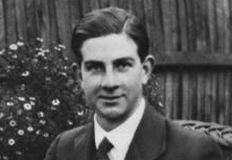Name Norman Thorne | ||
 | ||
Died 1925, Wandsworth, London, United Kingdom | ||
Forensic casebook norman thorne channel four 2008
Norman Thorne (c. 1902 – 22 April 1925) was an English Sunday-school teacher and chicken farmer who was convicted and hanged for what became known as the Chicken run murder. He murdered his fiancée Elsie Cameron (born 22 April 1898) on 5 December 1924 at his chicken farm in Crowborough, Sussex and later dismembered her body and buried it.
Contents

Sir Arthur Conan Doyle, the creator of the fictional detective Sherlock Holmes, lived in Crowborough and took an interest in the case.
History
Elsie Cameron, of Kensal Rise, London, and Norman Thorne were engaged on Christmas Day 1922. However, it became apparent that Elsie had psychological problems and Norman, who had started seeing another woman, no longer wanted to marry her, although he didn't have the courage to tell her. Elsie and her family, who wanted her off their hands, put pressure on Norman to settle a wedding date. To try to speed up the wedding, Elsie claimed she was pregnant, although she and Norman had never had sex.
On Friday 5 December 1924, Elsie Cameron travelled from London to Crowborough to stay with Thorne for a planned weekend visit. He claimed that he had not seen her. He sent a note to her on 7 December asking her why she hadn't come. The police started investigating and witnesses said they had seen Cameron in Crowborough and on Thorne's farm on 5 December. After further investigations the police arrested Thorne on 14 January 1925. The farm was searched and police began to dig up the grounds. Items belonging to Elsie, including her overnight bag, were found.
On 15 January Thorne gave a statement to the police admitting that he had dismembered the body and he told them where it was buried. However, he claimed that Elsie had committed suicide by hanging herself from a beam in the hut where he lived. It was discovered that the beam had no marks consistent with those which the weight of a body would have caused.
The police also discovered newspaper cuttings in Thorpe's hut about a murder that had occurred on 15 April 1924 on a Sussex beach; one of the so-called Crumbles murders, in which the body had also been dismembered and buried. This finding was alleged to indicate pre-meditation on the part of Thorne.
Thorne was tried at the Assizes (a court) in Lewes on 11 March 1925 before Mr Justice Finlay. The prosecution was led by Sir Henry Curtis Bennett and the defence by J.D. Cassels. The defence claimed that Cameron had hanged herself and that Thorne had concealed the death in panic. The evidence of Home Office pathologist Sir Bernard Spilsbury was that she had been beaten to death.
Thorne was found guilty of murder on 16 March 1925.
The case received a lot of press coverage at time. Many people, including Sir Arthur Conan Doyle, thought that the trial had not proved 'beyond reasonable doubt' that Thorne had killed, or meant to kill, Cameron. An appeal was lodged in March 1925, but it was dismissed the following month.
Thorne was hanged on 22 April 1925 in Wandsworth prison in London.
